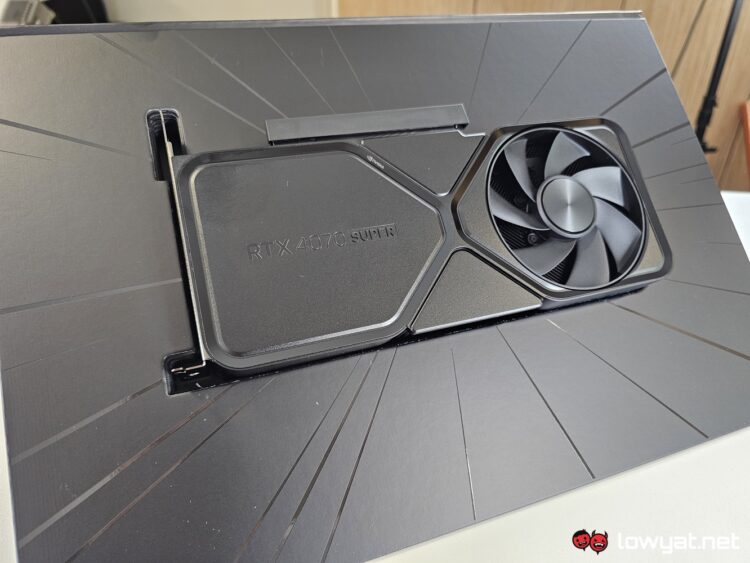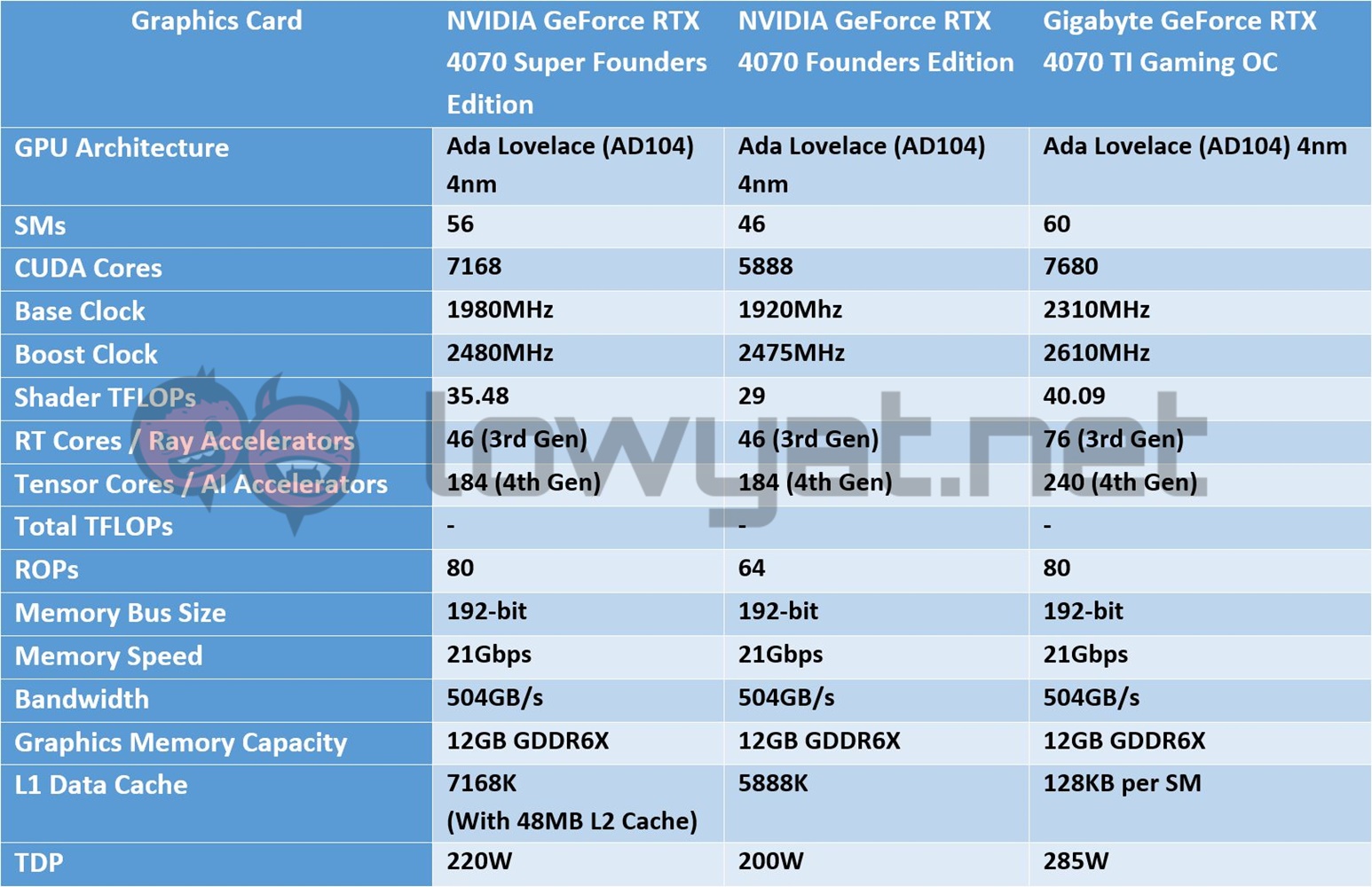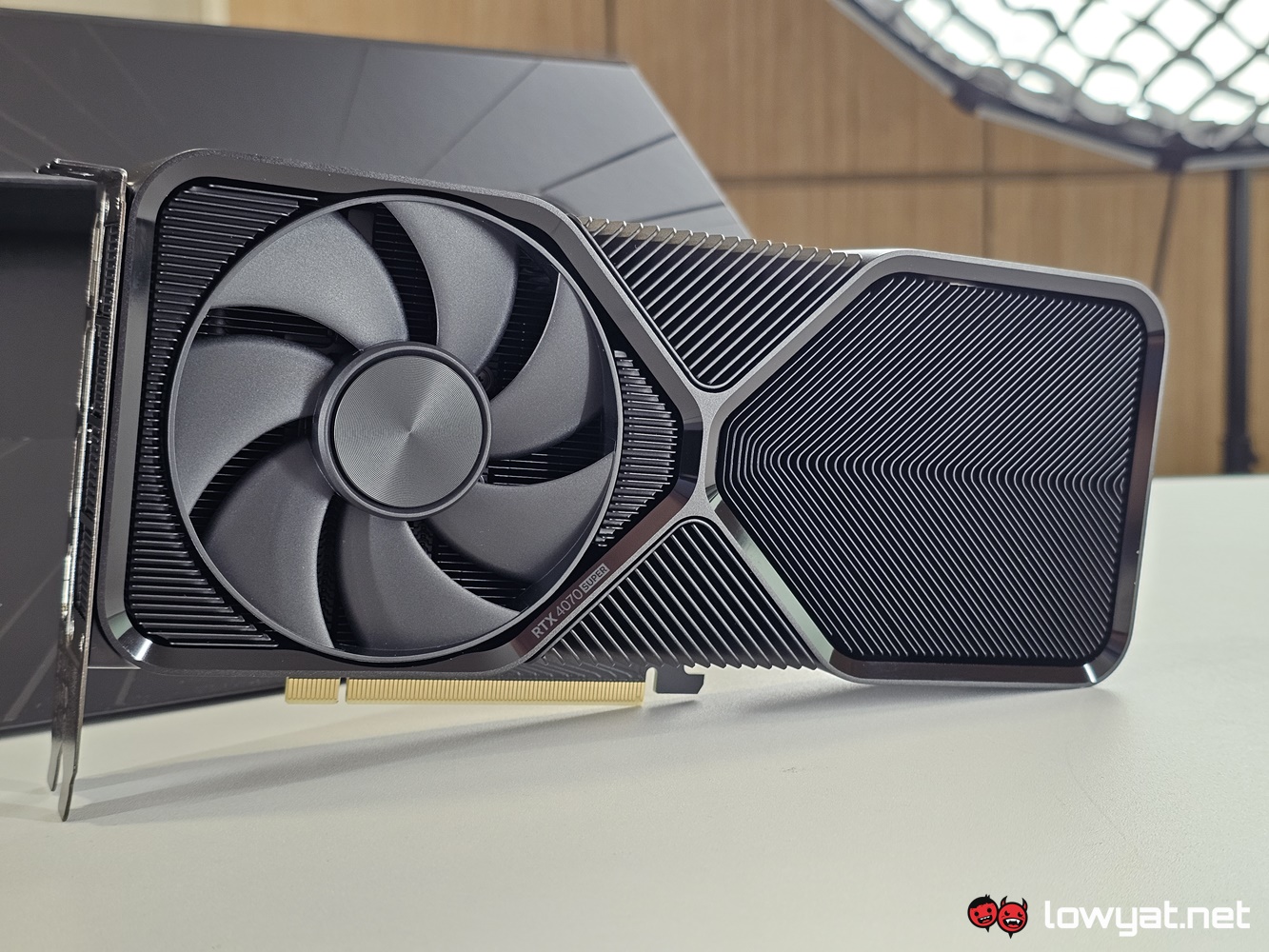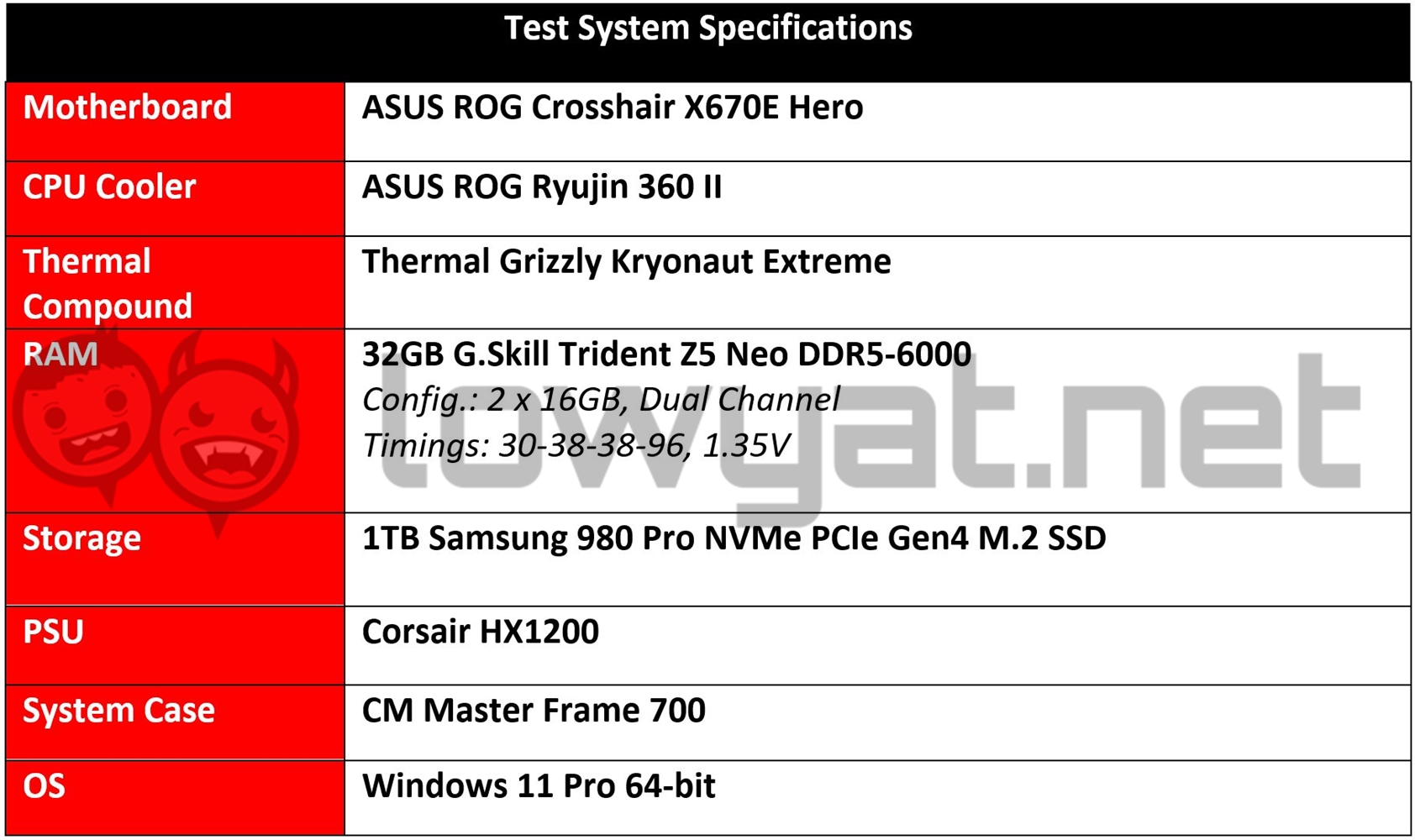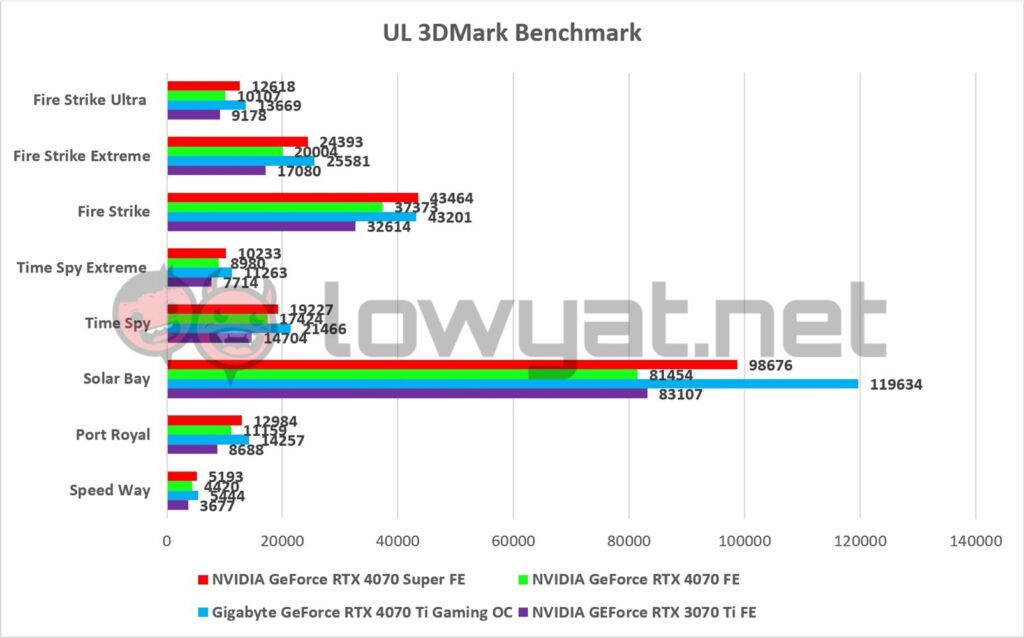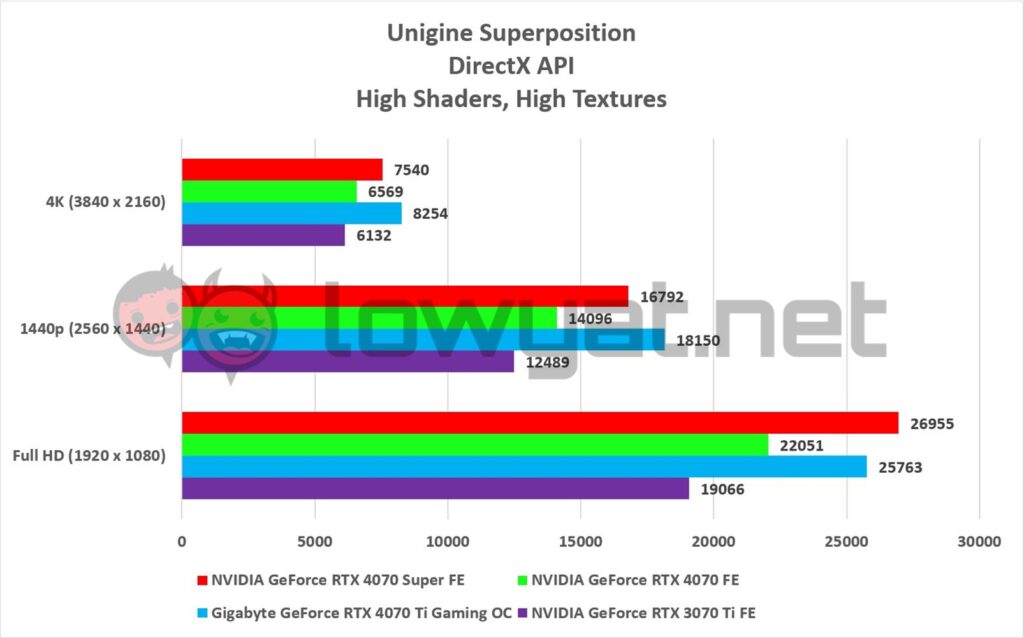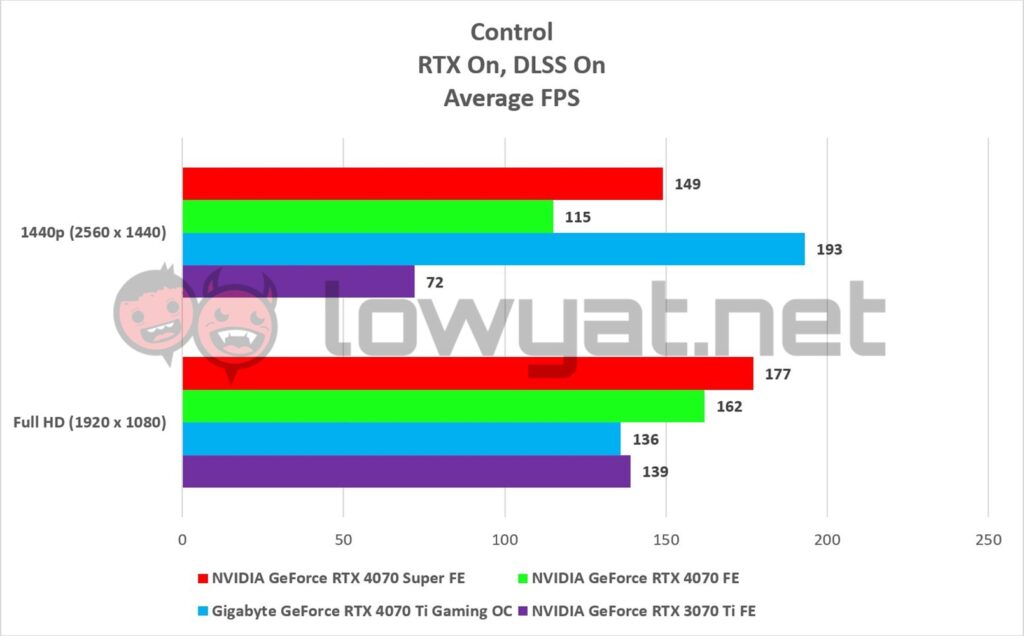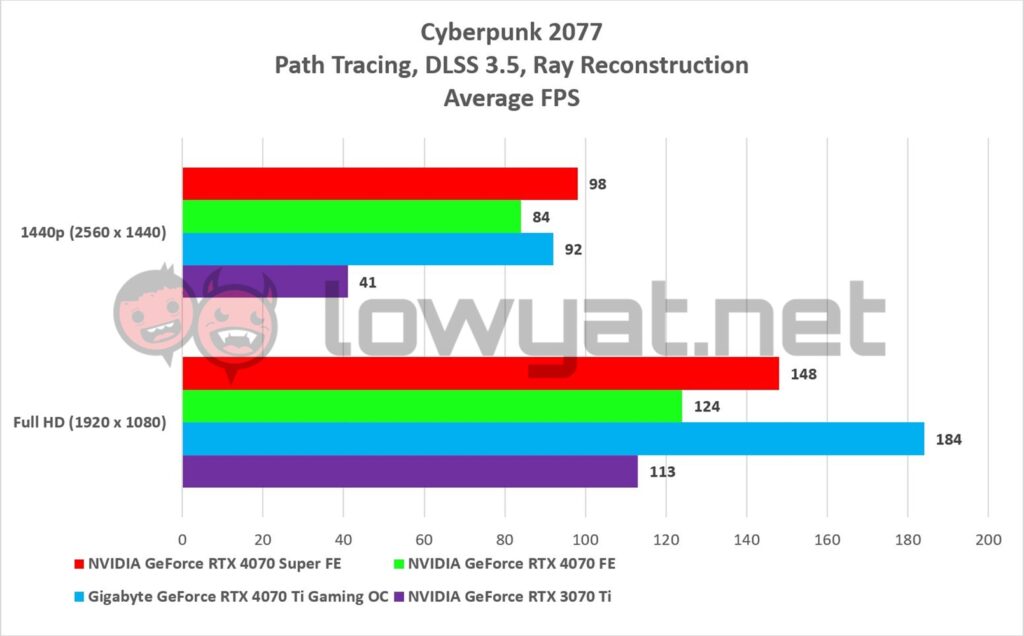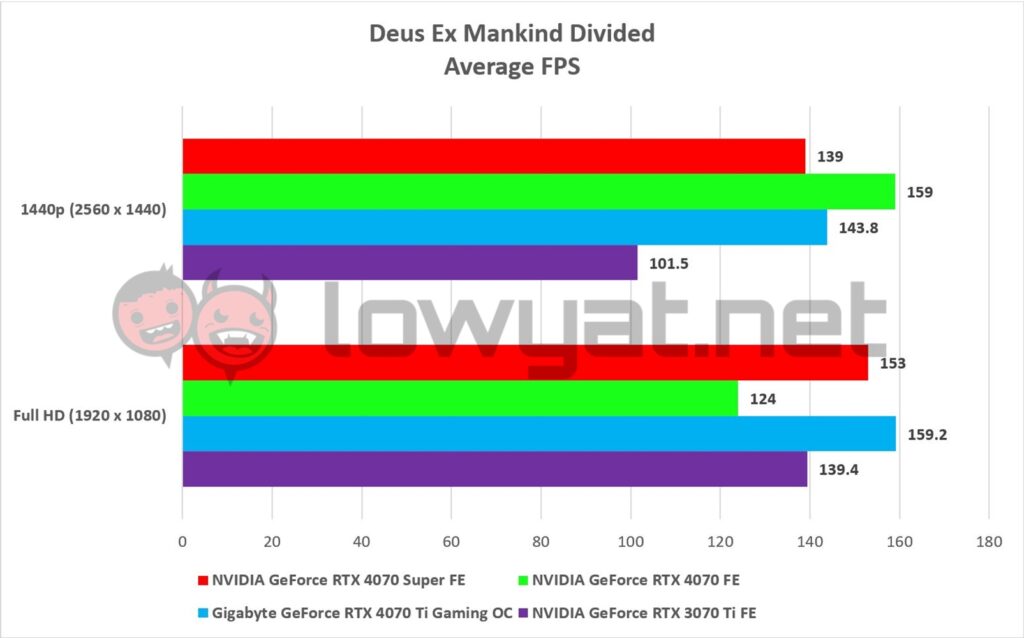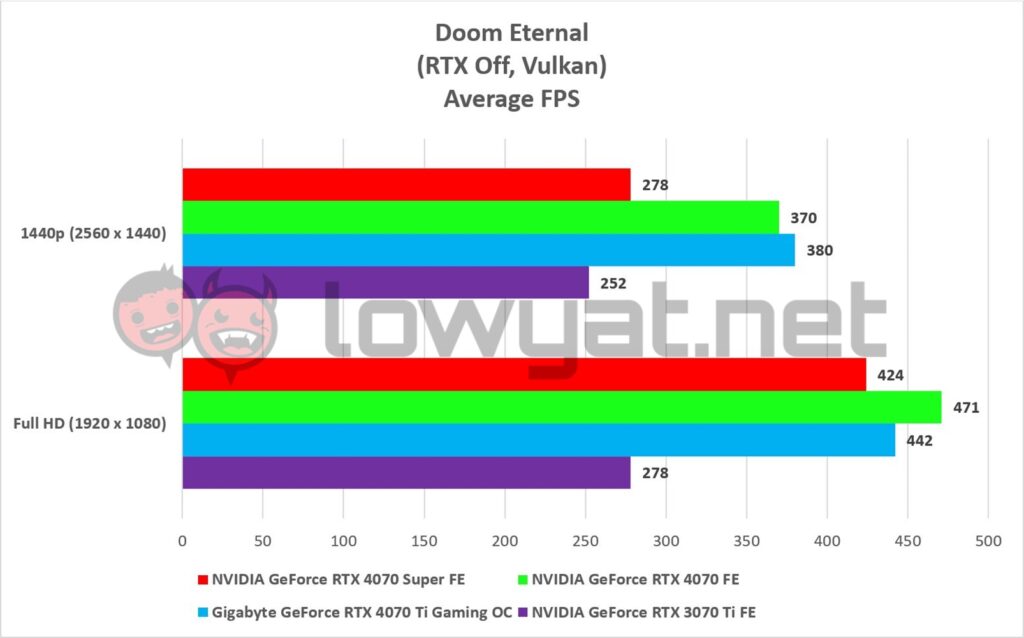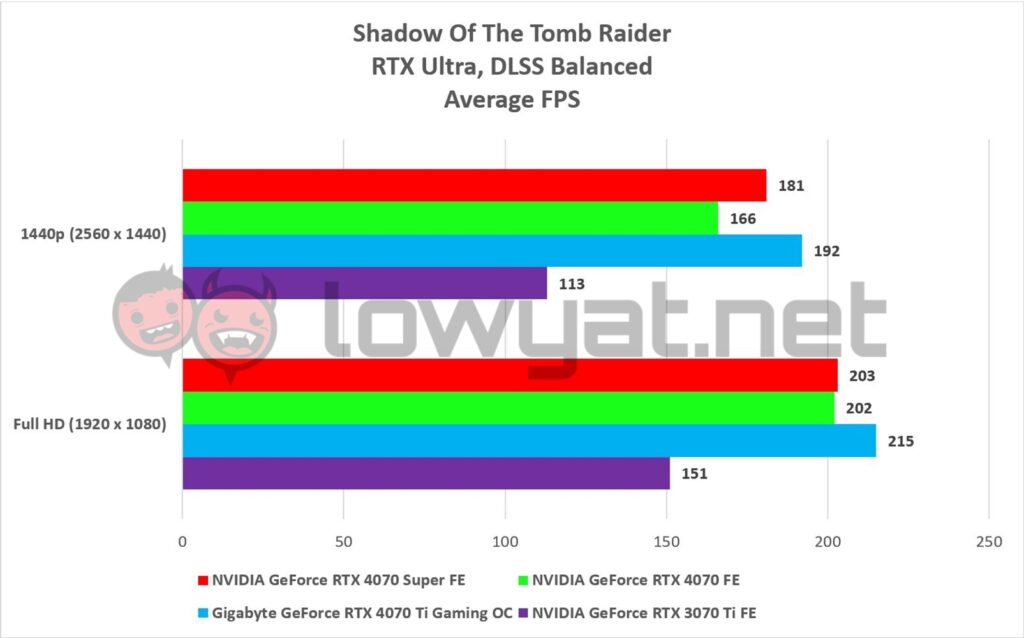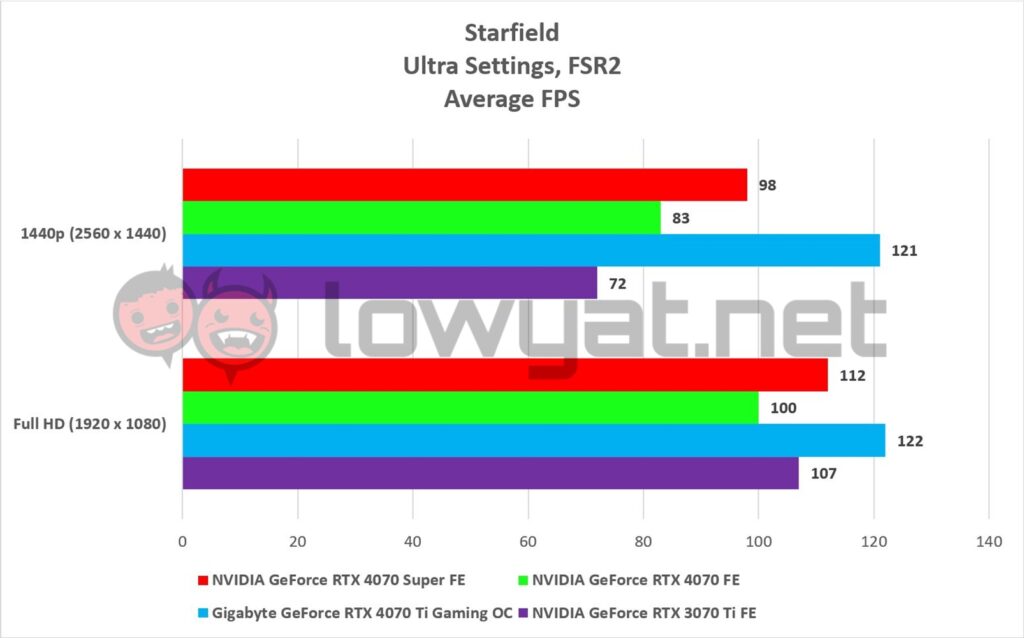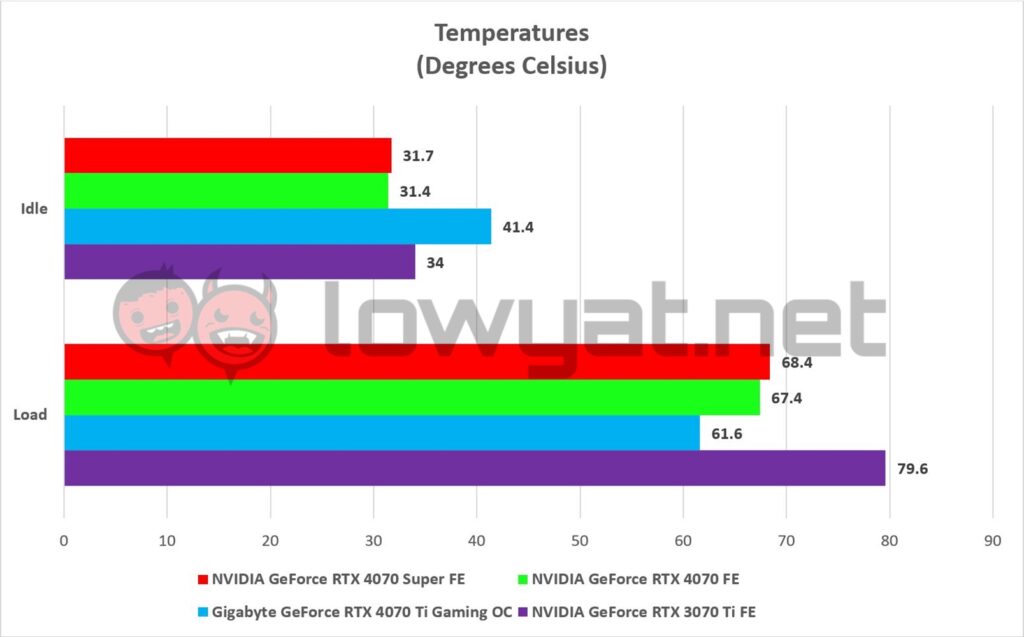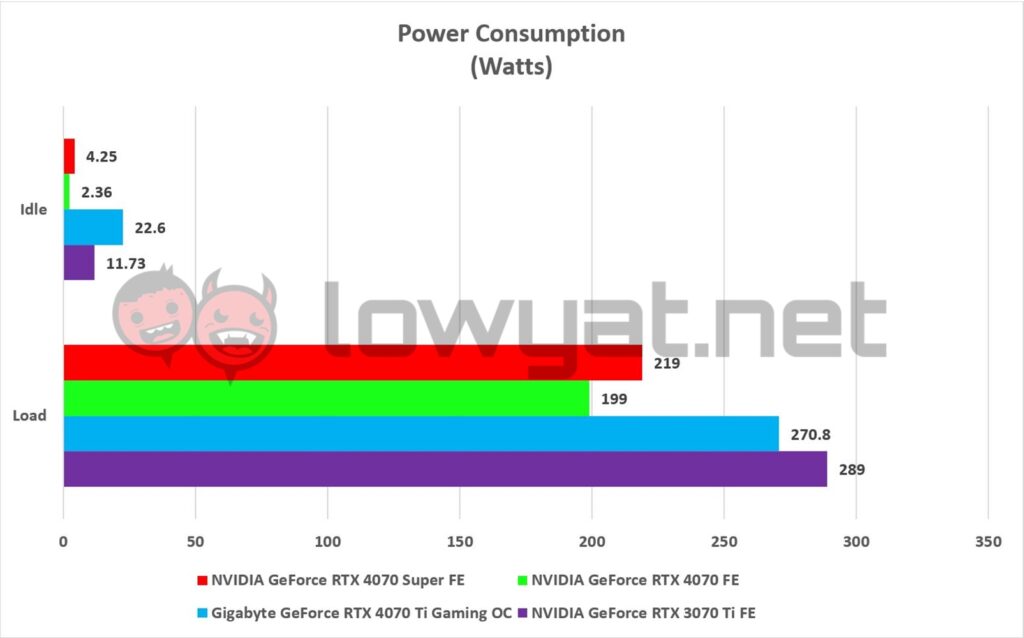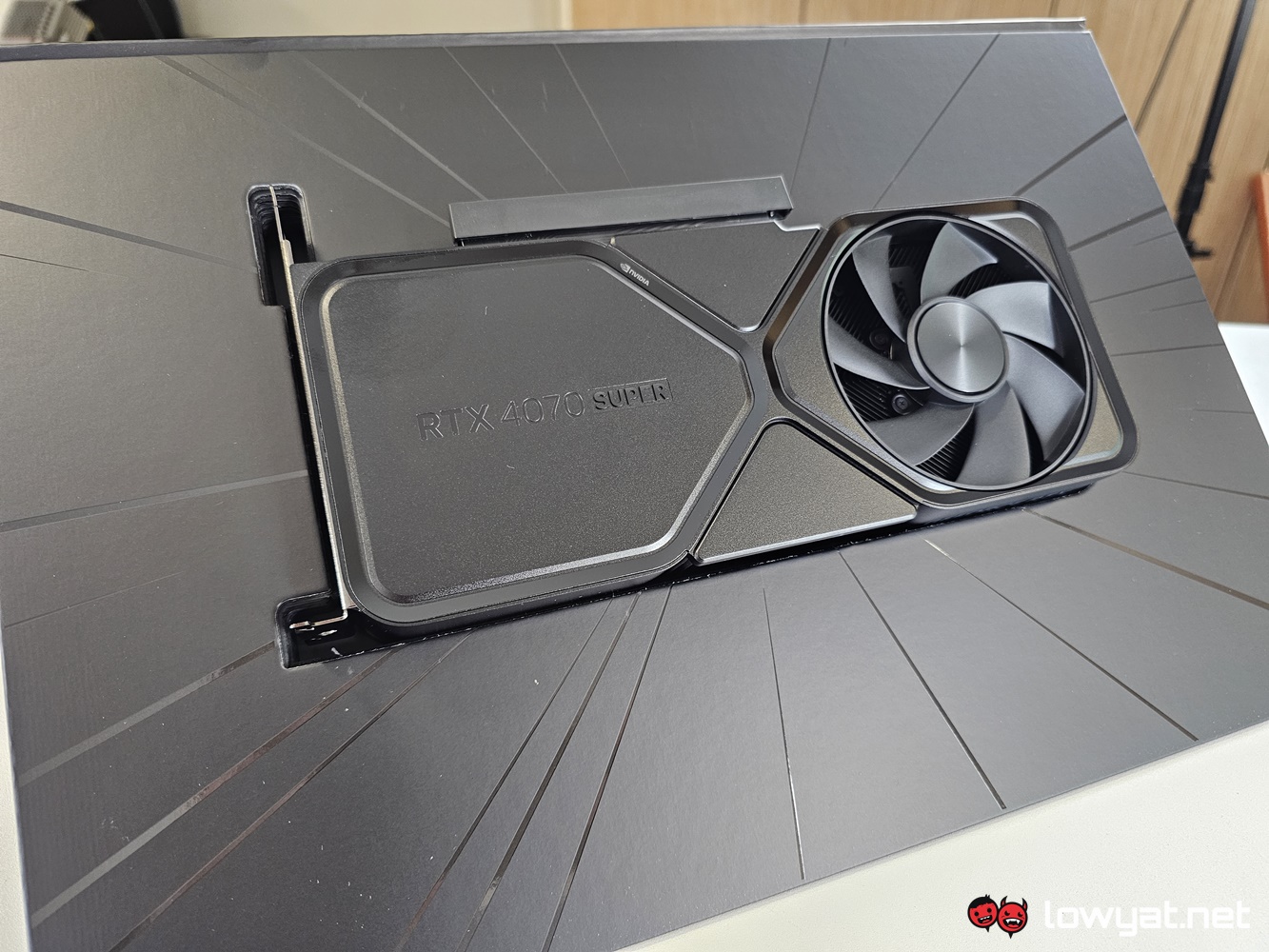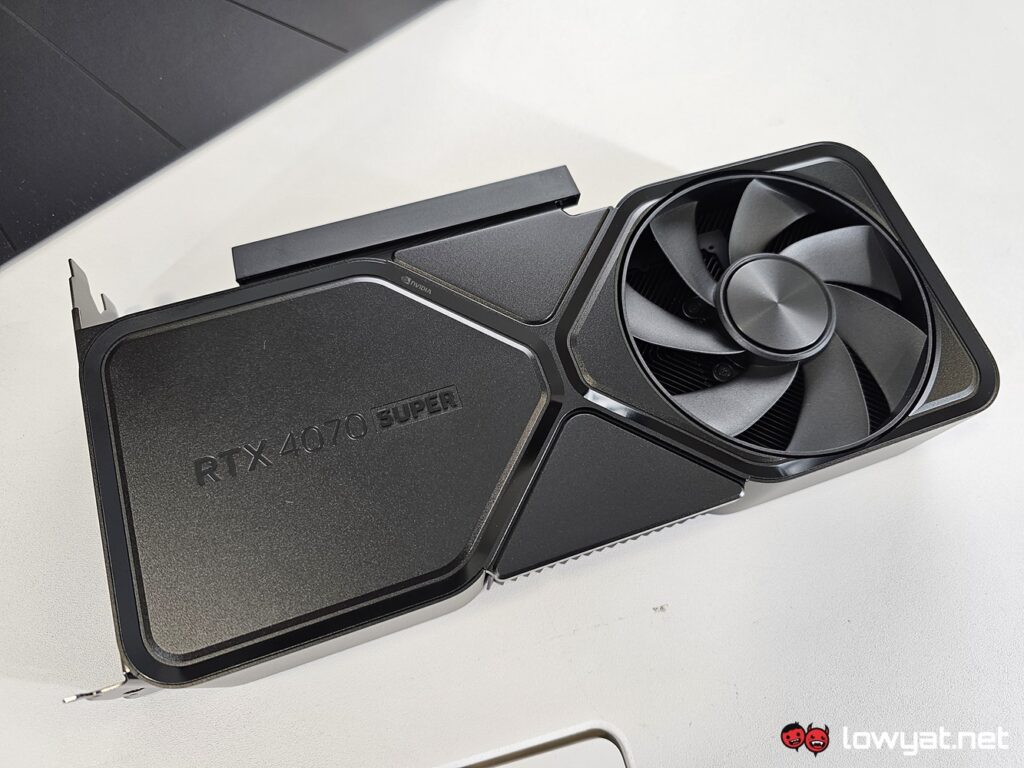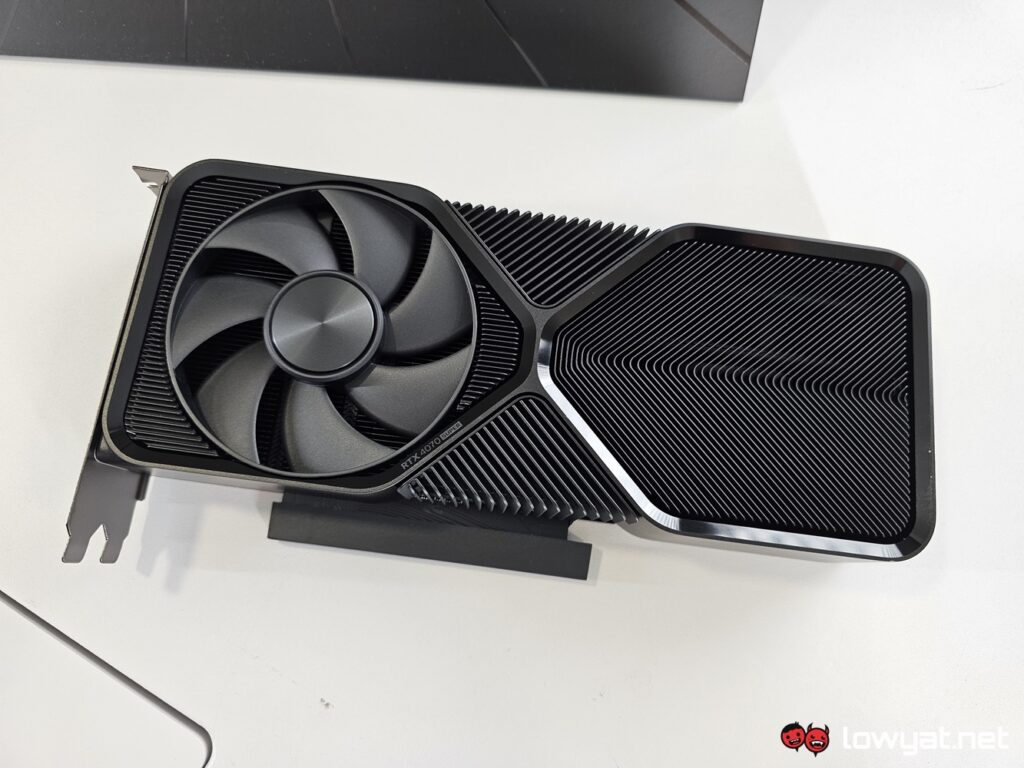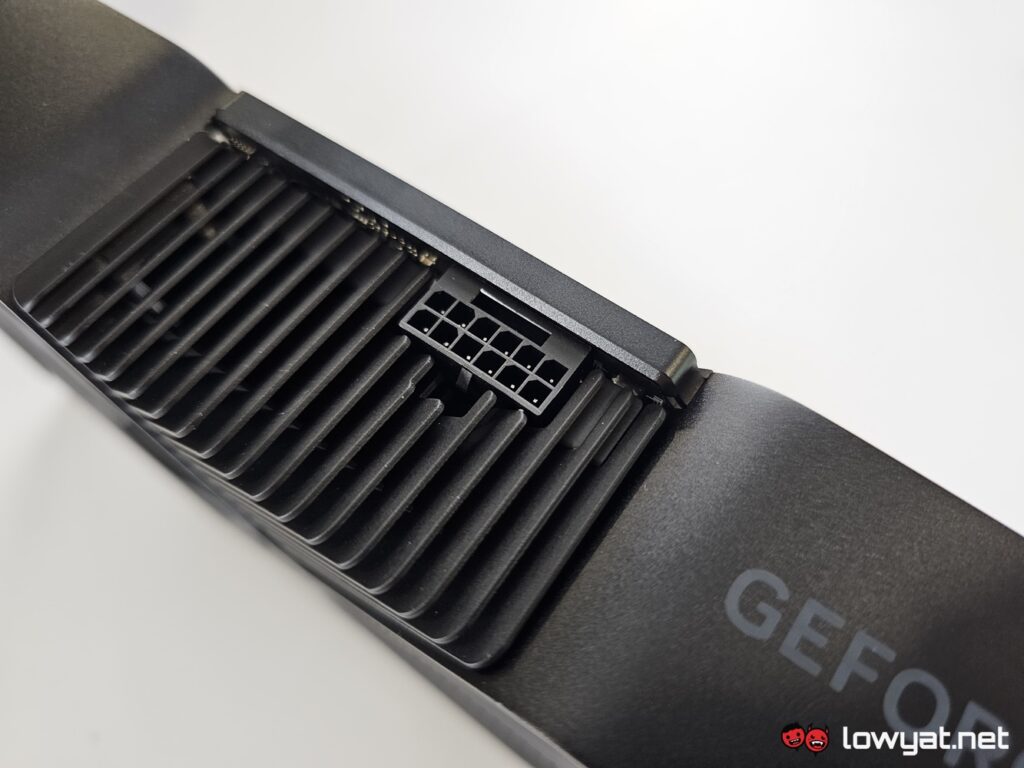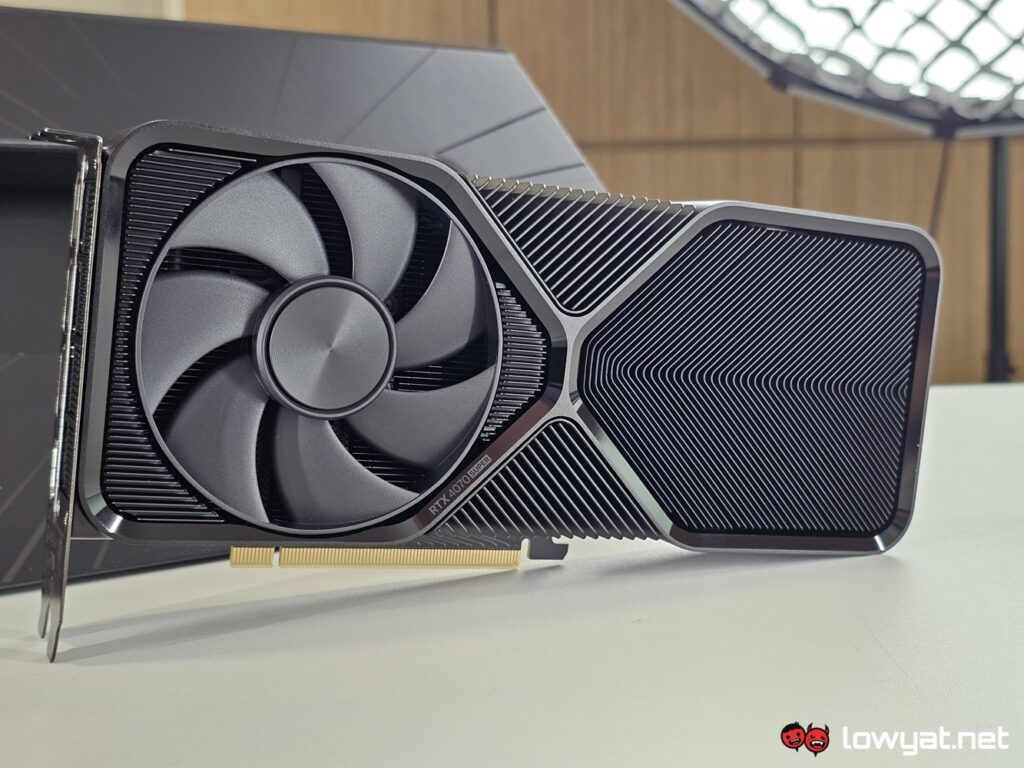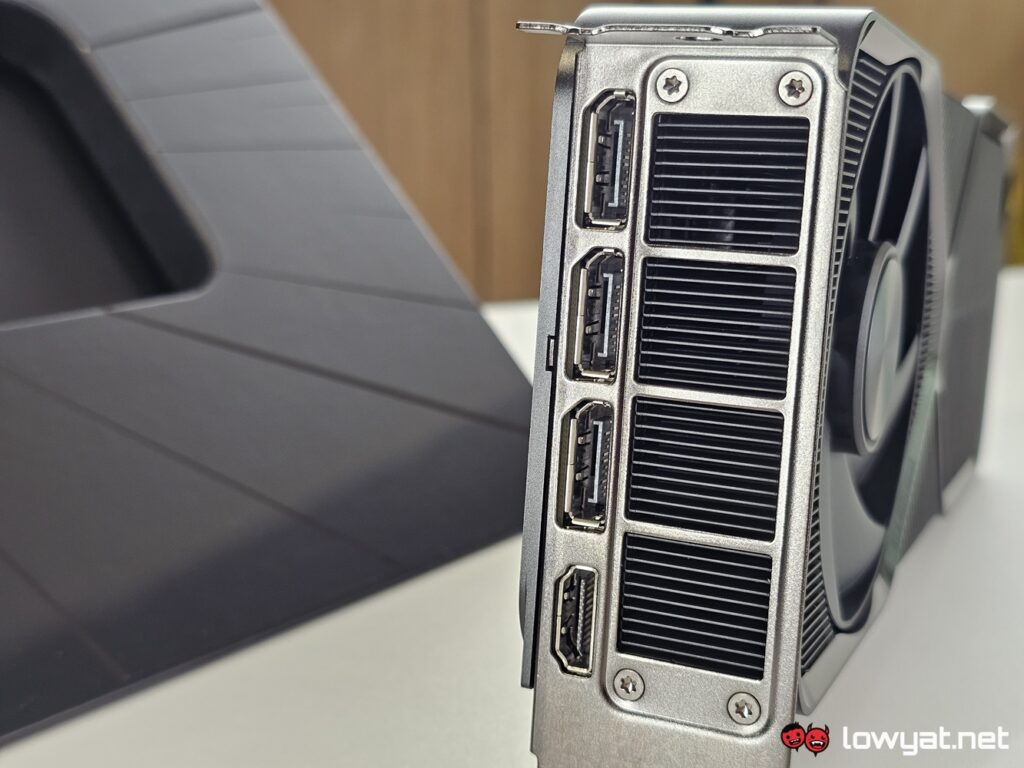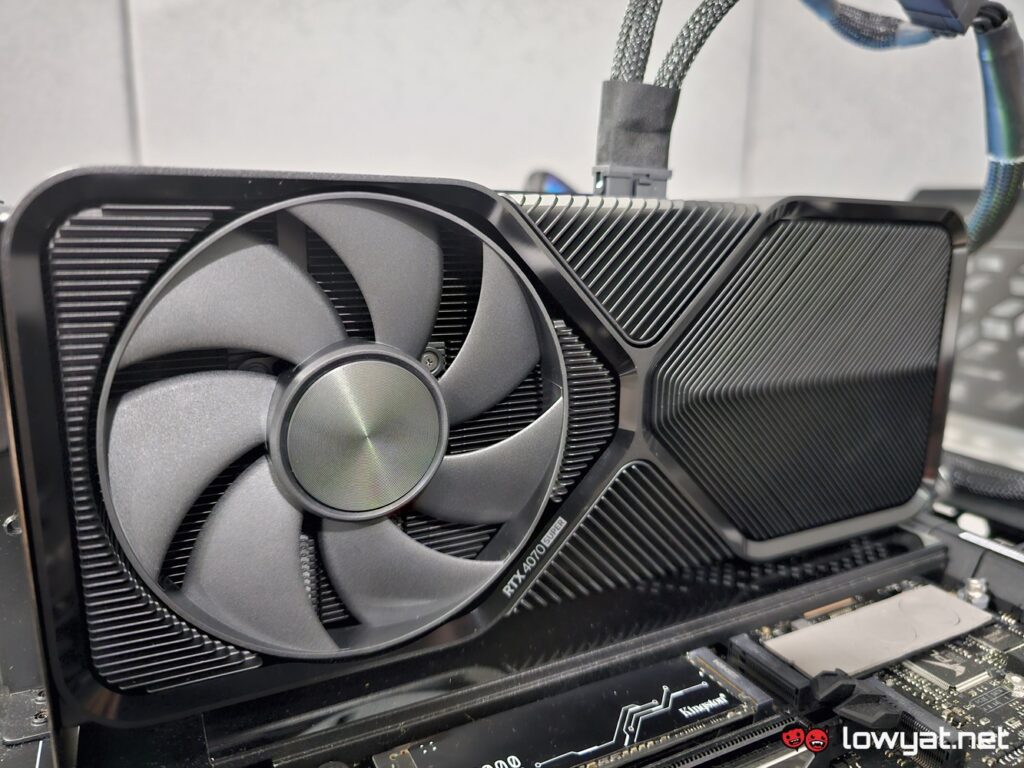Just as NVIDIA promised, one of the first GeForce RTX 40 Super Series cards it is releasing to the masses is the RTX 4070 Super. Just like clockwork, then, the GPU brand has sent us the Founders Edition (FE) variant of the card to my lab, just so that I can put it through the paces.
Specifications
Design
As it is with all NVIDIA FE cards, I won’t be spending a lot of time describing the design of the cooler shroud and the technology behind the Dual Axis Flowthrough that’s been employed by the GPU brand.
In fact, the only changes to the RTX 4070 Super FE in its entirety are that it is now shrouded in an all-black anodized metal, and that the 12VHPWR port on it is the new and improved version of the ones originally used with the non-Super variants of the cards. Meaning that it’s a lot more secure and eliminates any chances of its coming loose or catching fire midway through your gaming session.
Internally, the RTX 4070 Super still sports the same 12GB GDDR6X but this time around, NVIDIA is giving it a larger 48MB L2 Cache and 7,168 CUDA Cores, the latter specification bringing it closer to RTX 4070 Ti territory, which has 7,680 CUDA Cores.
Testbench
Benchmarks, Temperature, And Power Consumption
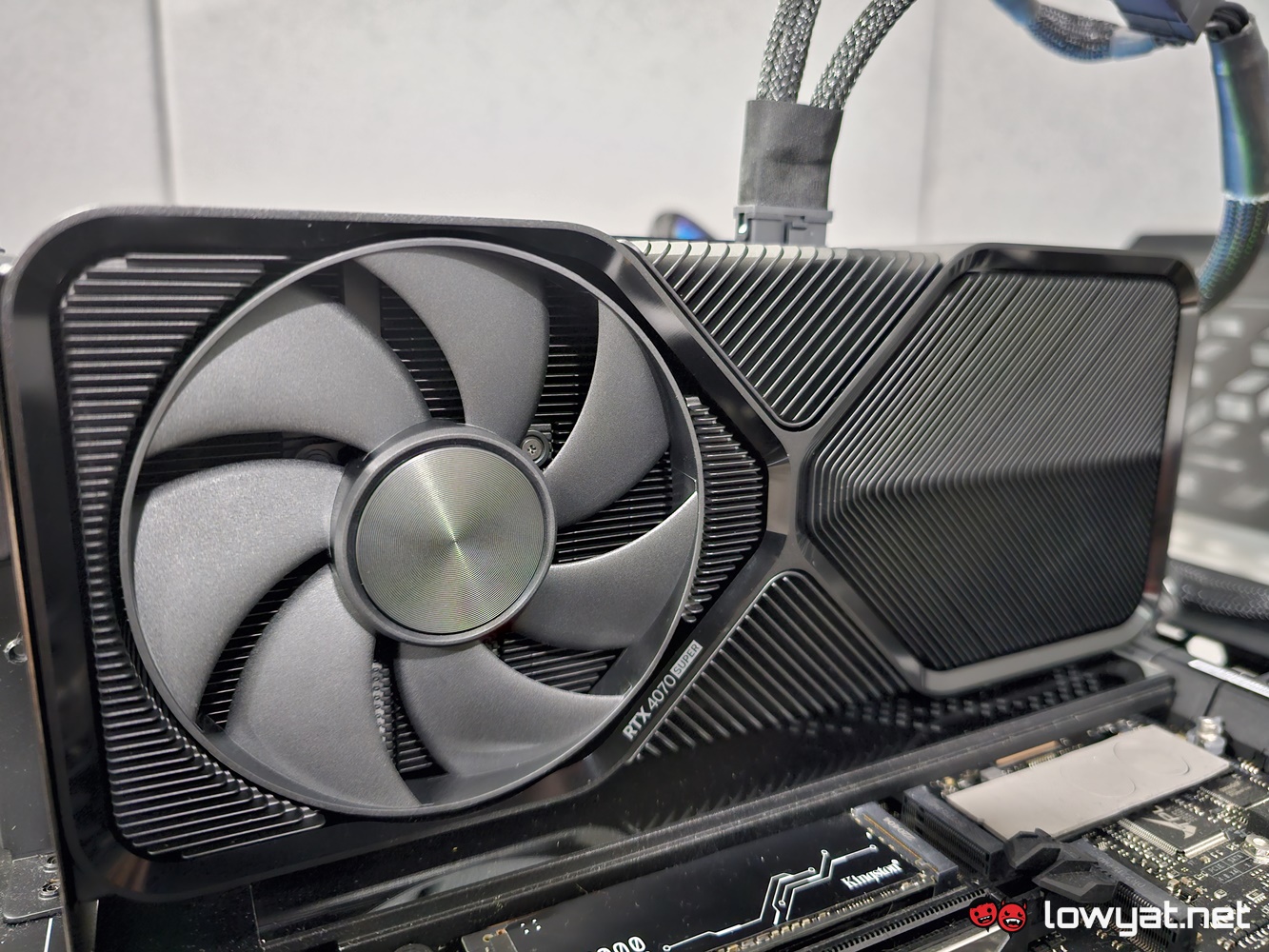 Off the bat, the RTX 4070 Super and its fat 48MB L2 Cache and the additional CUDA cores puts it ahead of its non-Super sibling across all fronts. In the synthetic benchmarks, it pulls ahead of the RTX 4070 by both small and significant margins.
Off the bat, the RTX 4070 Super and its fat 48MB L2 Cache and the additional CUDA cores puts it ahead of its non-Super sibling across all fronts. In the synthetic benchmarks, it pulls ahead of the RTX 4070 by both small and significant margins.
The small gains can be seen within the tests of UL’s 3DMark; the test in which the RTX 4070 Super FE gained a substantial lead over the non-Super RTX 4070 is Solar Bay. In the Superposition benchmark, the GPU is the dominant 4070 with the gained grounds in 1440p and Full HD resolutions.
Like all graphics cards, gaming is the home territory of the RTX 4070 Super and with the majority of test titles, the card can hold a comfortable lead over the non-Super 4070. Of important note is that the card actually manages to maintain a healthy lead in the 1440p segments but again, it does falter in some, such as Doom Eternal and Deus Ex Mankind Divided (DXMD). But, in titles like Cyberpunk 2077, that bigger L2 Cache plays a role in pushing the extra frames.
What is mildly impressive is that, despite all those extra frames being churned out, the RTX 4070 Super and its operating temperature at load is practically the same as the non-Super 4070. However, it does consume a tad bit more power at peak operating performance and honestly, it’s a negligible increment.
Conclusion
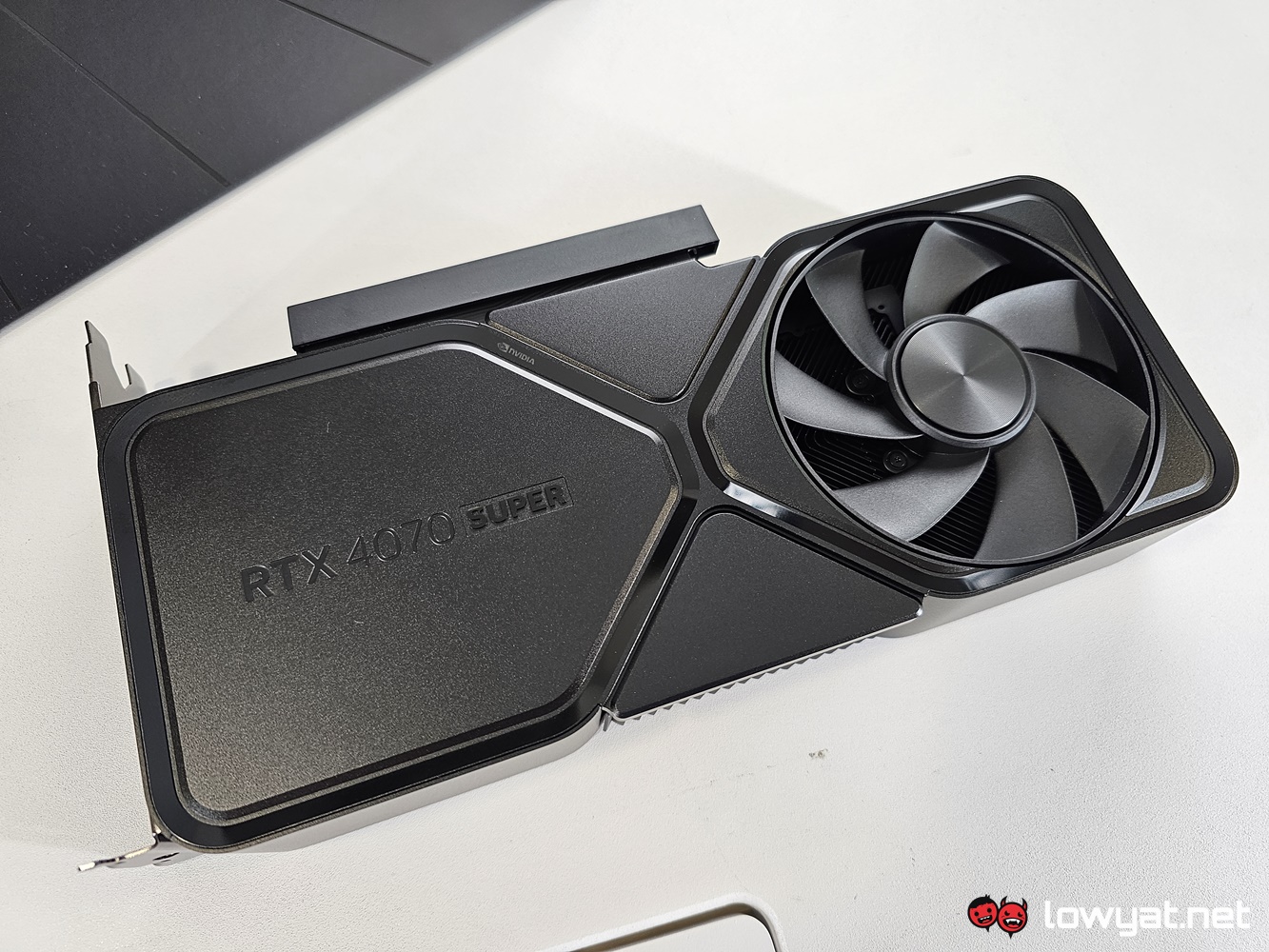 With a starting SRP of US$599 (~RM2,806), I think it is safe to say that the asking price is fair this time around, given the performance uplift between the GeForce RTX 4070 Super and its non-Super sibling. Having said that, I also acknowledge that paying more than RM2,000 for a mid-range card still eers on the side of pricey, if not steep.
With a starting SRP of US$599 (~RM2,806), I think it is safe to say that the asking price is fair this time around, given the performance uplift between the GeForce RTX 4070 Super and its non-Super sibling. Having said that, I also acknowledge that paying more than RM2,000 for a mid-range card still eers on the side of pricey, if not steep.
However, despite the few hit-or-miss scenarios of the RTX 4070 Super in some times and in specific resolutions, that bigger L2 Cache and CUDA core count most definitely makes this GPU a choice for gamers seeking a higher-than-average Full HD or average QHD gaming immersion. Of course, for those looking for an excuse to make that jump from the RTX 3070 or 3070 Ti but still want to stick within the XX70s range, I see no better reason than this card. The other option being the 4070 Ti Super, which I’ll be posting my findings about soon.
Photography by John Law.

